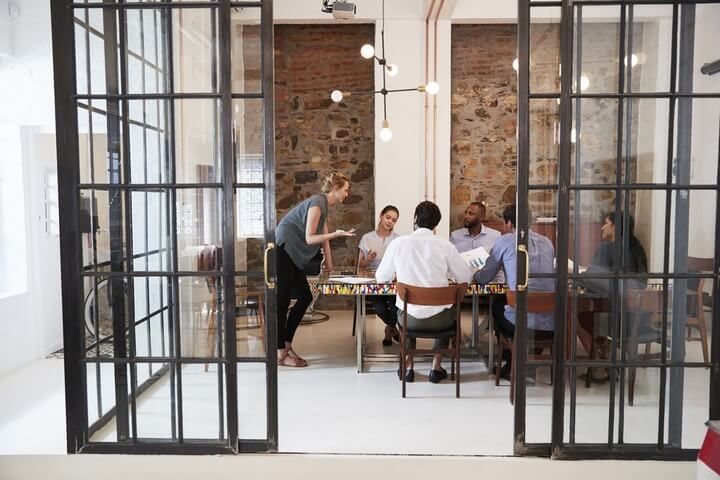Simulations
All simulations are independent solutions for the diverse needs of different teams. Most of the simulations are based on research; see more on the simulation pages.
Our simulations

Team Strengths
This simulation helps in understanding your colleagues, especially their preferences regarding different kinds of work tasks. The simulation creates mutual understanding and empowers better team self-guidance.
Explore different factors affecting team work, including concentration, creativity, tolerance for conflict, and performing. The simulation frees team members’ minds beyond their regular work roles and provides an opportunity for discussion of hidden strengths and different roles at work and during spare time.
Perfect as part of a team day or as the team’s first simulation.

Stress factors
This simulation helps in understanding team members in stressful situations. The exercise also promotes open discussion of stress factors within the team. The simulation deals with work-related stress factors, including work fragmentation, challenging social situations, and unclear division of labor. People experience the effect of these factors on stress levels differently. The story progresses through everyday situations and provides an opportunity for a facilitated discussion on team members’ experiences regarding different stress factors.

Entrepreneurial leadership
In this simulation, the team makes strategic choices for an internationally successful corporation in difficult times. You will face business challenges that highlight the entrepreneurial aspects of your team. In the simulation, the team will be able to evaluate itself and its performance in relation to various elements of entrepreneurial activity. The team encounters situations that require, for instance, uninterrupted concentration or asking “why.”

Efficient leadership team
Research shows that the effective operation of a leadership team deals with, for instance, the ability to argue in a constructive way, psychological security, acknowledgement of mistakes and working toward common objectives. The leadership team differs from other teams in an organization: it is secondary team to its members. The leadership team also deals with the most difficult issues in the organization and makes critical decisions. For these to succeed, the team needs to be able to deal with challenging questions and to critically evaluate the choices that have been made. As the story unfolds, concrete situations help a facilitated discussion on team members’ readiness and strengths in different kinds of situations.

Mastering hybrid work
This simulation helps the team explore their practices in hybrid work. Members’ personal and team challenges at work are examined and, at the same time, an open discussion culture is promoted. The simulation variables are compiled from various guides and instructions related to remote work.
In the simulation, the experience of team members with hybrid work can be discussed openly with a facilitator. What are the hardest parts for different team members? What works well? What hasn’t been talked about?

Challenging work community situations
The simulation helps the team understand the kinds of diversity that exist in the work community and engage in a constructive discussion of the related, sometimes difficult, phenomena such as unconscious discrimination.
Diverse teams are shown to perform better than homogeneous teams, but working together can be more challenging. After all, we live in a world where equality is not fully realized. Sometimes, we are not even aware of our own or our team’s attitudes toward diversity. Through concrete situations, the simulation promotes discussion on how we can recognize diversity and intervene in difficult situations.

Biases in our thinking
This simulation helps to understand phenomena related to thinking and interaction. The exercise provides background on everyday phenomena such as stereotyping and a “not invented here” type of thinking and helps the team to discuss actions and decision-making, promoting a culture of open discussion. The variables are based on research on the subject (in particular on Kahnemann). The story provides a background for a facilitated discussion of the team members’ experiences in collaboration and decision-making. It fosters open discussion and as such, allows conclusions to be drawn for the future enhancement of the team’s activities.

Agility
Agile action is the goal in many teams, but what does agility consist of? This agility simulation makes concrete the routines and operating models behind everyday work. At the same time, the team gets to reflect on the elements that make a team agile.
An agile approach involves, for example, a quick feedback cycle and exposing one’s own actions to critique. The simulation helps team members understand that different members have different tolerance thresholds for various styles of feedback. It also opens a discussion on unclear issues and helps to address issues related to trust.

Team’s leisure time
The simulation helps team members get to know each other outside of the work role. When we know the members of the team, it is also easier to handle work matters together.
The simulation entices, among other things, to tell stories about one’s own life, which increases trust and promotes acquaintance between the team. The simulation promotes casual discussion and listening to others.

Sources of motivation and recovery from work
The simulation helps you discover the meaningfulness of work and the sources of recovery. We humans experience different things as energising, motivating and inspiring. On the other hand, we also have different ways of disengaging from work and seeking adequate balance for working. Understanding both of these helps the team to work and support each other.
The simulation uses the multiple choice simulation type and is lighter and faster to run than the classic simulation. In the simulation, the response options deal with your own preferences and good practices.

Multi-location work
In remote, face-to-face, and multi-location work, there are factors that threaten or support well-being and performance at work. The benefits and challenges of working in multiple locations depend on the type of organisation, business, work and tasks involved. The simulation breaks away from where the work is done and focuses on factors that give each person energy and well-being at work, regardless of where they work.
The simulation uses a multiple choice simulation approach and is lighter and faster to run than a regular simulation. In the simulation, the response options deal with personal preferences and good practices.